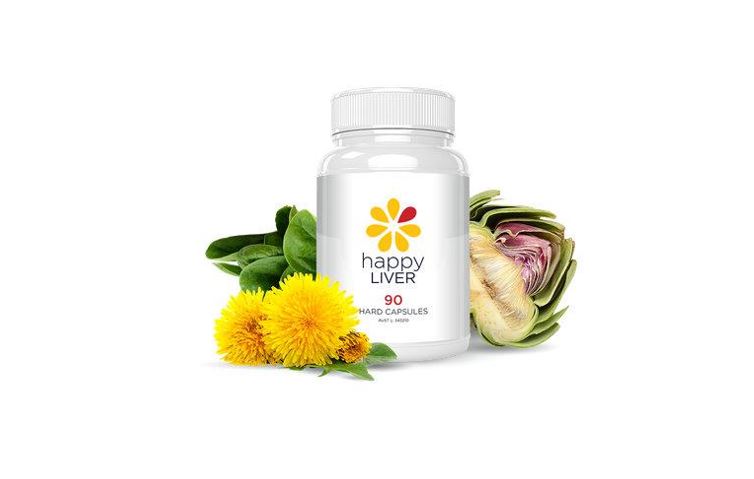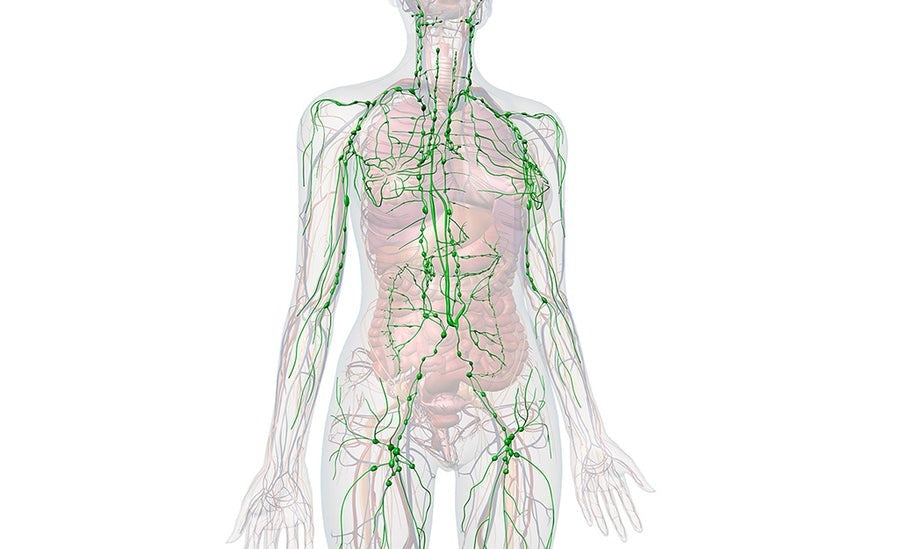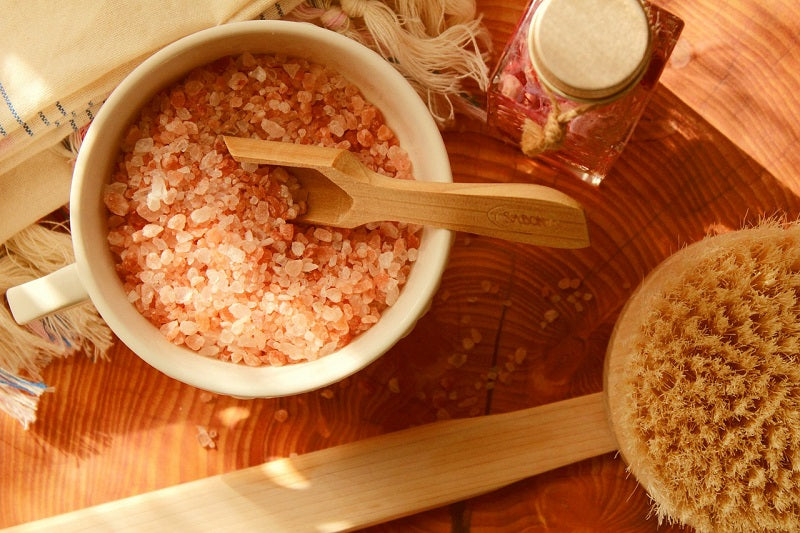How Will Happy Liver Help Me?
The herbs found in Happy Liver are traditionally used in Western herbal medicine to support healthy liver function, digestion and hormone metabolism – but it doesn’t end there. The myriad of therapeutic benefits that come from the ingredients in our Happy Liver formula are also scientifically proven!
They have been found to:
- Protect the liver
- Enhance liver regeneration
- Boost antioxidant status and reduce free radicals in the body
- Support natural liver cleansing and detoxification processes
- Promote healthy digestive system function
- Relieve symptoms of indigestion, dyspepsia and digestive discomfort
- Promote bile flow from the gallbladder and liver
A healthy liver is vital to wellbeing
Do you know all the things your liver does for you?
- It breaks down and processes fats and fat soluble nutrients
- It maintains sex hormone balance (healthy periods and happy menopause) by clearing unwanted sex hormones
- It breaks down fats and provides you with energy through fat metabolism
- Its main job within the digestive system is to process the nutrients absorbed from the small intestine
- It stores copper, Vitamin B12, and Vitamin A
- It converts Vitamin D to an active form
- It synthesises bile to help remove toxins through the bowels
- It filtrates and removes waste from the blood
- It regulates blood sugars which can stop cravings and fatigue
- It maintains healthy triglyceride and cholesterol levels
- It plays a role in iron levels and stores
- It processes medications, alcohol, nicotine and other external toxins as well as ‘endogenous’ toxins which develop as a byproduct of our metabolic processes
As you can see, the liver does a lot to keep us healthy. If our liver becomes overburdened or sluggish, our whole system can be affected. This can happen when more toxins are ‘coming in’ than can be handled and manifests as hormonal imbalance, poor skin, digestive problems, headaches, low mood and weight gain, to mention a few.
How does Happy Liver work?
Happy Liver contains Milk thistle, Dandelion root and Cynara scolymus as well as the amino acids methionine, cysteine, taurine and glycine and the digestive enzymes lipase and protease. All of these ingredients play a unique role in healthy detoxification. Learn more about each ingredient below:
Silybum marianum (St Mary’s thistle)
St Mary’s Thistle is a herb renowned for protecting, tonifying and regenerating the liver. It helps improve cholesterol levels and fat metabolism. It also supports healthy liver enzyme activity by increasing antioxidants and suppressing inflammation.
Cynara scolymus (Globe artichoke)
Globe artichoke is another thistle species also with therapeutic effects on both the liver and cholesterol status. It assists with indigestion and is commonly prescribed for gallbladder concerns, loose/oily stools, nausea, bloating, gas, or gastrointestinal ulcers.
Dandelion root
Dandelion supports the liver through the increase of the potent antioxidant, glutathione. It has strong, bitter properties which support bile production, healthy digestion and balanced blood sugars.
Methionine, Taurine & Cysteine
This power trio of amino acids has been included as a means to boost our antioxidant status, prevent cell damage and better detoxify chemicals moving through the liver.
Methionine, an ‘essential’ amino acid that gets converted to cysteine and cystine, is a precursor to the potent antioxidants glutathione and taurine.
An ‘essential amino acid is one that cannot be made by the body and therefore needs to be consumed through protein rich foods or supplementation.
They have the ability to help detoxify heavy metals, clear out nasty oestrogens and prevent liver damage. In fact, low levels of methionine has been directly correlated with liver damage.
Taurine specifically helps bile production and boasts anti-inflammatory properties. It’s also well known for enhancing energy and brain function which is why it’s a common inclusion in energy drinks.
Protease & Lipase
These are both digestive enzymes which help break down proteins and lipids (fats). These are in the Happy Liver formula because of the strong relationship between digestion and our liver. Both these systems work together closely to ensure healthy detoxification and wellbeing.
Who can take Happy Liver?
We recommend using natural medicine to support your liver if you:
- work in a job where you’re exposed to chemicals
- consume alcohol, use drugs, or smoke cigarettes
- follow a diet high in sugar
- have liver concerns
Anyone who suffers with cholesterol, skin, hormonal or digestive issues will also benefit from herbs and nutrients that support the gastrointestinal tract and natural detoxification pathways.
Tips when getting started
-
Start slow. We do get a few comments from ladies who get headaches or feel nauseous to start. This actually shows how critical you need some liver support. So just start slowly and build up if you feel this way.
-
Take it in the morning or lunch with food. The dose is 3 caps per day however I suggest start on 1 per day. Taking it in the evening at the start may disrupt your sleep to start. So just start in daylight hours. Later its fine to take it in the evening.
-
HL also contains digestive enzyme specifically designed to help you digest proteins and fats better so dont be surprised if your digestion improves and bloating goes away.
- If you have hormone metabolism issues resulting in excessive oestrogen levels be a little careful when first getting started as oestrogen can cause headaches when the body starts to release it. So just go slowly as mentioned at the start.
- You may experience more regular and consistent bowel motions. This is a good thing.
- You should notice your energy levels and skin health improve over the coming weeks as well.
How long until I’ll notice results?
You can feel the benefits of Happy Liver upon your digestion as soon as it reaches your digestive tract. However, it can take longer to see a change in chronic conditions such as hormonal imbalance, skin issues or fatty liver syndrome.
Supplement with Happy Liver consistently for at least three months and connect with our practitioner team if you have any questions or concerns. You can reach any of health practitioners through our Live Chat or via our Contact Form.
REFERENCES
Abenavoli et al. (2018). Milk thistle (Silybum marianum): A concise overview on its chemistry, pharmacological, and nutraceutical uses in liver diseases. Phytotherapy Research. Nov;32(11):2202-2213.
https://doi.org/10.1002/ptr.6171
Fatima T, Bashir O, Naseer B, Hussain SZ. (2018). Dandelion: Phytochemistry and clinical potential. Journal of Medicinal Plant Studies. 198-202.
https://www.plantsjournal.com/archives/2018/vol6issue2/PartC/6-2-42-182.pdf
Froese DS, Fowler B, Baumgartner MR. (2019). Vitamin B 12 , folate, and the methionine remethylation cycle-biochemistry, pathways, and regulation. Journal of Inherited Metabolic Disease. Jul;42(4):673-685.
https://doi.org/10.1002/jimd.12009
Mahboubi, M. (2018). Cynara scolymus (artichoke) and its efficacy in management of obesity. Bulletin of Faculty of Pharmacy, Cairo University. Volume 56, Issue 2:115-120.
https://doi.org/10.1016/j.bfopcu.2018.10.003
Marques et al. (2017). Cynara scolymus L.: A promising Mediterranean extract for topical anti-aging prevention. Industrial Crops and Products. Vol.109:699-706.
https://www.cabdirect.org/cabdirect/abstract/20183012245
Chiang J. (2014).Liver Physiology: Metabolism and Detoxification. Pathobiology of Human Disease. pp.1770-1782.
https://doi.org/10.1016/b978-0-12-386456-7.04202-7
Mora SI, García-Román J, Gómez-Ñañez I, García-Román R. (2018). Chronic liver diseases and the potential use of S-adenosyl-L-methionine as a hepatoprotector. European Journal of Gastroenterology & Hepatology. Aug;30(8):893-900.
https://doi.org/10.1097/meg.0000000000001141
Mullur R, Liu YY, Brent GA. (2014). Thyroid Hormone Regulation of Metabolism. Physiological Reviews. Apr; 94(2): 355–382.
https://doi.org/10.1152/physrev.00030.2013
Ozougwu, JC. (2017). Physiology of the liver.International Journal of Research in Pharmacy and Biosciences. Vol 4:8, pp 13-24.
https://ijrpb.org/papers/v4-i8/3.pdf
Ramani K & Lu SC. (2017).Methionine adenosyltransferases in liver health and diseases. Liver Research. Vol 1:2 Sept:03-11.
https://www.sciencedirect.com/science/article/pii/S2542568417000265
Schaffer SW, Ito T, Azuma J. (2014). Clinical significance of taurine. Amino Acids. 2014 Jan;46(1):1-5.
https://doi.org/10.1007/s00726-013-1632-8
Miraj S & Kiani S. (2016). Study of therapeutic effects of Cynara scolymus L.: A review. Der Pharmacia Lettre. 8 (9):168-173.
https://www.scholarsresearchlibrary.com/articles/study-of-therapeutic-effects-of-cynara-scolymus-l-a-review.pdf
Shen M & Shi H. (2015). Sex Hormones and Their Receptors Regulate Liver Energy Homeostasis. International Journal of Endocrinology. Article ID 294278.
https://doi.org/10.1155/2015/294278
Valková V, Ďúranová H; Bilčíková J, Habán M. (2020). Milk thistle (Silybum marianum): a valuable medicinal plant with several therapeutic purposes. Journal of Microbiology, Biotechnology and Food Sciences. Vol 9:4.
http://dx.doi.org/10.15414/jmbfs.2020.9.4.836-843
Wang X, Zhang Z, Wu SC. (2020). Health Benefits of Silybum marianum: Phytochemistry, Pharmacology, and Applications. Journal of Agricultural and Food Chemistry. 68, 42, 11644–11664.
https://doi.org/10.1021/acs.jafc.0c04791
Yin et al. (2015). L-Cysteine metabolism and its nutritional implications. Molecular Nutrition & Food Research. Jan;60(1):134-46.
https://doi.org/10.1002/mnfr.201500031























